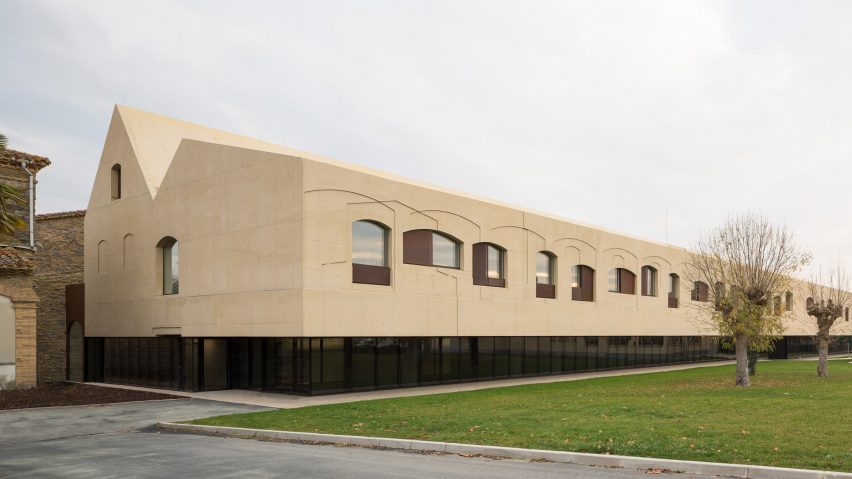A team of Spanish architects has modernised a 19th-century psychiatric centre in the city of Pamplona by adding a series of structures with gabled profiles that reference the forms of the existing buildings.
The project represents the first stage of a masterplan by local studio Vaillo+Irigaray Architects, with Daniel Galar and Josecho Vélazto redevelop the healthcare facility, which occupies a large site with extensive grounds on the edge of the city.
The Centro Psicogeriatrico San Francisco Javier is operated by the local government and supports people with mental illnesses through the provision of accommodation and on-site care.
The centre occupies a large group of 19th-century buildings arranged in a geometric formation around landscaped gardens.
The studio was asked to renovate several of the buildings and introduce contemporary additions, while retaining the relationship between the structures and their natural surroundings.
"The aim is to enhance the original 'hygienist spirit' and 'therapeutic spirit' favouring occupational therapy and daily activities as fundamental treatments elements for good care of patients," said the architects.
The design of new structures focuses on creating hybridised forms that combine references to the existing architecture with contemporary treatments and details.
The architects described the additions as "prostheses" that aim to extend the facility's performance through the introduction of new spaces with enhanced capabilities.
"In the same way that prostheses help the original member to recover a lost function, in this case they reconfigure the space and make new functions possible," said the architects.
"In addition, they complement the structure to accommodate new healthcare trends and channel and assimilate new technologies."
The geometry of the original buildings' facades and roof lines are echoed in the crisp profiles of extensions that perch on top of, or rest alongside, their predecessors.
The new additions are built entirely using structural concrete for the walls and roofs, so the whole elongated forms perform like beams that require minimal support.
This allows the upper floors to cantilever over sheltered walkways lined with glazed walls and creates the impression that the heavy concrete volumes are floating.
The concrete is dyed the same hue as the cement mortar used to bind together the stone and brick walls of the 19th century buildings.
The tone of the concrete creates consistency with the existing structure and helps to unify the scheme.
This will be enhanced as the material weathers over time due to exposure to the sun or prevailing winds, taking on the same character as the aged buildings.
Arched outlines borrowed from the windows of the original wards are embossed into the surfaces of the new concrete facades, introducing a further detail described pertinently by the architects as "a memory of what was left".
Photography is by Rubén P Bescós.

